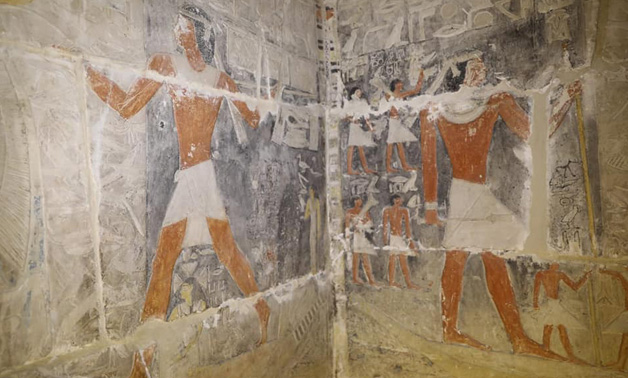
In a bid to boost tourism, Egypt will open a 4,000 year old tomb in Saqqara, Giza to the public, for the first time since its discovery in 1940 – almost 80 years ago.
The tomb was unearthed by Egyptian archaeologist Zaki Saad, and belonged to a great Pharaonic official named Mehu, as well as his family, who were relatives of the first king of the Sixth Dynasty. The tomb features two rooms with colorful, well-preserved inscriptions and artwork on its walls.
During the reign of King Pepi, third ruler of the Sixth dynasty, Mehu was given 48 titles, which were all recorded on the walls of his room.
According to a press statement from the Ministry of Antiquities, the tomb also contains a long narrow corridor with six burial chambers, with rooms for Mehu’s son, Mery Re Ankh and grandson, Hetep Ka II.
The tomb must first undergo restoration before it can be open to tourists.
Adel Okasha, head of the central administration of Cairo and Giza, announced that the Ministry of Antiquities had the work of cleaning and restoring the colored wall inscriptions, developing a proper lighting system, and covering up the burial well.
The tomb is “one of the most beautiful and complete tombs from the Old Kingdom within Saqqara”, according to Secretary General of the Supreme Council of Antiquities, Mostafa Waziri. In its artwork, Waziri described scenes of fishing, harvesting and dancing not seen in Saqqara tombs before the Sixth Dynasty.
One of the walls’ “most important scenes” depicts Mehu catching birds in the jungle, and hunting fish with a bayonet. According to Waziri, such images reveal the influence of the tomb owner, who was careful to engrave them in the first few chambers closest to visitors.




